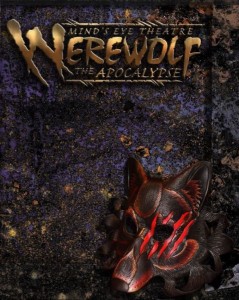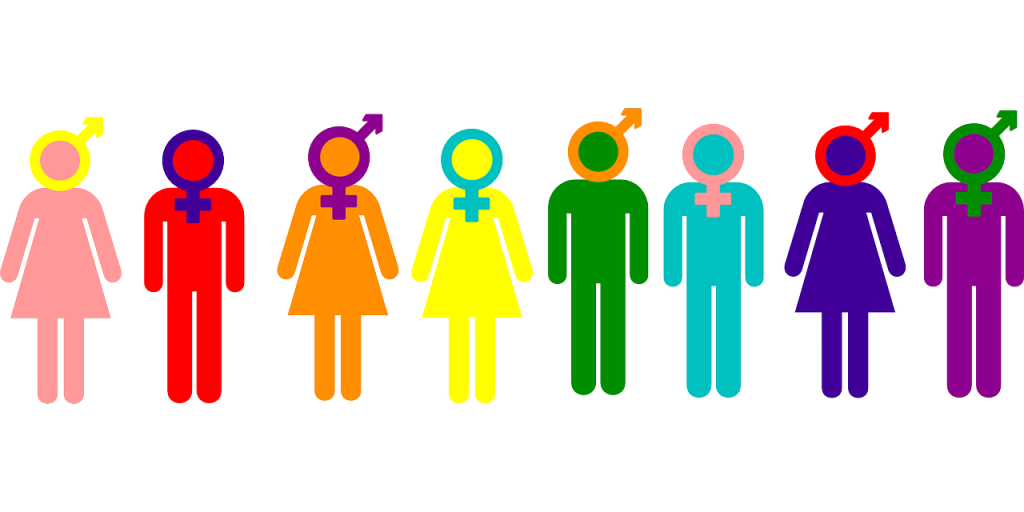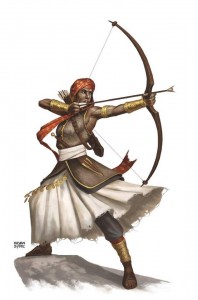Trans Representation and the Changing Face of Werewolf
by Lang Schmitt

Early on in the new Werewolf: the Apocalypse BNS book we meet Verity Argyris. Verity is a young Black Fury historian who’s working to record the oral histories of the Garou, and her observations are scattered throughout the book.
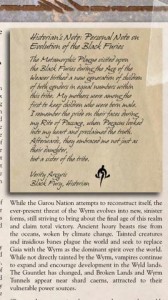
After many pages of meeting Verity through her observations, we learn on page 62 that Verity’s mothers in the Tribe were one of the first to keep male-born children, and that at her Rite of Passage she was proclaimed “not just their daughter, but a sister of the tribe”. In other words, the text is obliquely saying that Verity is what we’d identify as a trans(*) woman.
A Societal Shift
I haven’t seen a lot of online discussion of Verity. (Maybe I’m looking in the wrong places.) While I was searching, though, I found a lot of discussion from several years ago about if a character like Verity could exist among the Black Furies.
A lot of gamers came to the conclusion that she couldn’t. The Black Furies, they argued, placed too much value on a person’s biology – and Garou would view sex-reassignment hormones or surgery as a tool of the Weaver. (More on this in a minute.)
Let me be clear: the first edition of the Black Furies book came out in the early ’90s, when including a radical second-wave feminist group in your fantasy world seemed progressive and forward-thinking. The Black Furies were based on real-life trans-exclusive Wiccan groups, which emphasize the sacredness of female-bodied biology and experience and reject male-bodied people as equal members.
But the BNS book states:

“[The Black Furies’] viewpoints have evolved, due to their new leadership.
The Age of Apocalypse has shown them that the equality
they seek so viciously is a complex issue, involving more
than just women and children. They realized that their
exclusivity would damn them … Those who
identify as having the hearts women [sic] also received the
blessing of Artemis and have been welcomed to the tribe.
… Despite their newly opened mindset,
there are rumors of a rift between modern and traditional
Furies regarding how lenient and accepting present-day
Black Furies are perceived by other werewolves.” (p. 70-71)
Trans-exclusive radical feminist (TERF) groups still exist in real life. They inspire harsh feelings from trans activists and their allies, who argue that excluding trans women from cis women’s spaces is pointless, and further marginalizes an already marginal population. Some TERFs and their groups have not moved past their trans-excusionary worldviews – but many are evolving, like the Black Furies are.
Some gamers will cry foul, arguing that it’s a political act to write a world where the Black Furies are beginning to welcome trans women. But this in-game change is tied to a real-world change, and it would be equally political to not include trans people in an era when we are becoming more visible and accepted.
How to Write a Trans Character
I am young and trans. I am … blessed? … to have come of age at a time when trans people are newly visible in popular culture.
 Some people would tell you visibility is an unambiguous good. I’m less certain. There are a lot of lazily-written trans characters out there. The Lazily-Written Trans Character is often a conventionally feminine trans woman. She is non-threatening and non-sexual, although she may be a sex worker.
Some people would tell you visibility is an unambiguous good. I’m less certain. There are a lot of lazily-written trans characters out there. The Lazily-Written Trans Character is often a conventionally feminine trans woman. She is non-threatening and non-sexual, although she may be a sex worker.
She is usually tragic in some way. Often, she dies before the end of the story, to teach our cis protagonists some kind of lesson. Think of Angel from RENT, or Rayon from Dallas Buyers Club.
To be completely fair, this type of character is far preferable to unsympathetic trans caricatures, who are grotesque, hypersexual, and dangerous. (Think Buffalo Bill, or the attack ads that air about transphobic bathroom legislation.) But lazily-written trans characters are toothless, and ancillary to cis characters’ stories. They’re objects of pity (or vapid inspiration), rather than figures of genuine strength. They are no one anyone would want to be, or could ever be.
There is tragedy in much of the trans experience – but we are still the heroes of our own stories. But you wouldn’t know that from looking at these characters.
We are slowly seeing a broadening of the range of trans narratives that exists in mass media, but problematic characterizations remain. And even as we see more progressive types appear, mass media portrayals of trans still have something pernicious to them: the most interesting thing about us, in these stories, is that we are trans. Our narrative arc is our transition. Without our gender, we would be no one.
We don’t see a whole lot of Verity in the BNS book, past two vigniettes and her own observations. But she shows herself to be strong, observant, curious, intelligent, and active. She’s head and shoulders above the passive, pitiable trans “type” who furthers cis narratives.
Critically, she is more than her transition. There’s plenty of hay to be made about Verity’s gender, in thinkpieces like this, but ultimately her trans-ness is a footnote. It only comes up obliquely in the previously-mentioned quote, and in passing when she fears rejection from Black Fury elder in the second vigniette. It’s far more vital that she’s gathering information, and serves as our viewpoint character.
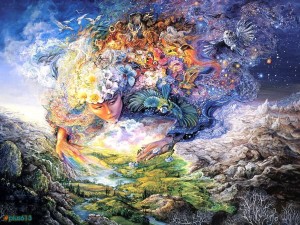
I can think of very few trans viewpoint characters in mass media, and even fewer who aren’t shown through the light of their transition. Verity feels like something genuinely novel.
The Real-World Politics of Werewolf
Why does this matter? Why does W:tA need trans representation?
When I was looking for discussions about trans in W:tA, I found that many anti-trans fans of the game have (or had) a medicalized and pathological view of trans people. We are out-of-balance, the argument goes. We are a product of modern medicine, not nature. No Garou would ever have us (except for maybe Glasswalkers).
I reject this argument out of hand. The medicalization and pathologicalization of trans is comparatively modern. Pre-modern cultures often made (and make) a place for trans people: Romans had galli; Indian society still has hijra; many American Indian cultures have third or fourth genders. Our position has varied from place to place, and we have often been the first to be marginalized and scapegoated in times of trouble, but we most definitely existed and we were often accepted.
It is we, in our Weaver-ridden society, who want all genders (and all bodies, in the case of intersex people) in two boxes. In fact, the BNS book gives a clear route for a non-medical transition for trans characters: the first level Ajaba gift in this system, Mask of Night, which lets characters transform their body to that of the “opposite sex”. Shun the Weaver’s medicalized works, and embrace the transformation nature offers you!
We are in fact very in-balance. Thematically, we mesh perfectly with a game about shapeshifting and balance – even as societies, real and fictional, find dynamic points of balance around us as we re-take our place at the table.
This brings me to the biggest reason why I think W:tA needs trans representation.
Many of the gamers I’ve spoken with are a little leery of this game – and to be completely fair, that’s a feeling I share. W:tA has a troubled legacy, in a lot of ways. I found that a lot of female and trans gamers perceive W:tA as a “game for bros”. Despite the game’s best intentions, they argue, W:tA players often create toxically masculine characters, who enact stereotypically masculine power fantasies without consequence. (This is completely separate from the in-universe transphobia, or “noble savage” stereotyping of Indigenous peoples.)

Obviously, this is a generalization. For any W:tA group I could point to that’s ridden with hyper-masculine power fantasies, I’m sure my readers could find several more that are thoughtful and well-balanced, that draw plenty of female and queer players.
But that’s not really my point: fairly or not, this is the baggage the game carries with it. A signature character like Verity isn’t a surefire medicine against W:tA‘s machismo, and I imagine a lot of gaming groups will choose to ignore the changes made to the Black Furies. But I imagine Verity might take the air out of the sails of a few of the hardcore bros out there, and make Storytellers rethink the feel of the setting.
It takes all kinds to save the world – ranging from the classically masculine fearless and strong, to the classically feminine sensitive and nurturing. It takes all kinds to build a healthy gaming community, too.
It remains to be seen what Storytellers and players do with BNS’ Werewolf. But I think BNS has taken a potentially polarizing, but critical step toward broadening the game’s world – and making it one female-bodied people and queers are more likely to find friendly to play in.
(*) For the purposes of this article, I’m using “trans” as an umbrella term that includes anyone who is not cisgender. “Cisgender” or “cis” means having a gender identity that corresponds with one’s biological sex. Trans, here, includes people who have taken medical steps to bring their body closer in line with their identity, those who want to take medical steps but have not done so yet, and those who feel no need to do so. I also mean it to include people who fall outside the gender binary.
Lang Schmitt is a transmasculine genderqueer person. He lives in Madison, WI and makes his living writing. He currently plays in Underground Theater. Find him on Facebook, or email him at langschmitt@gmail.com.
